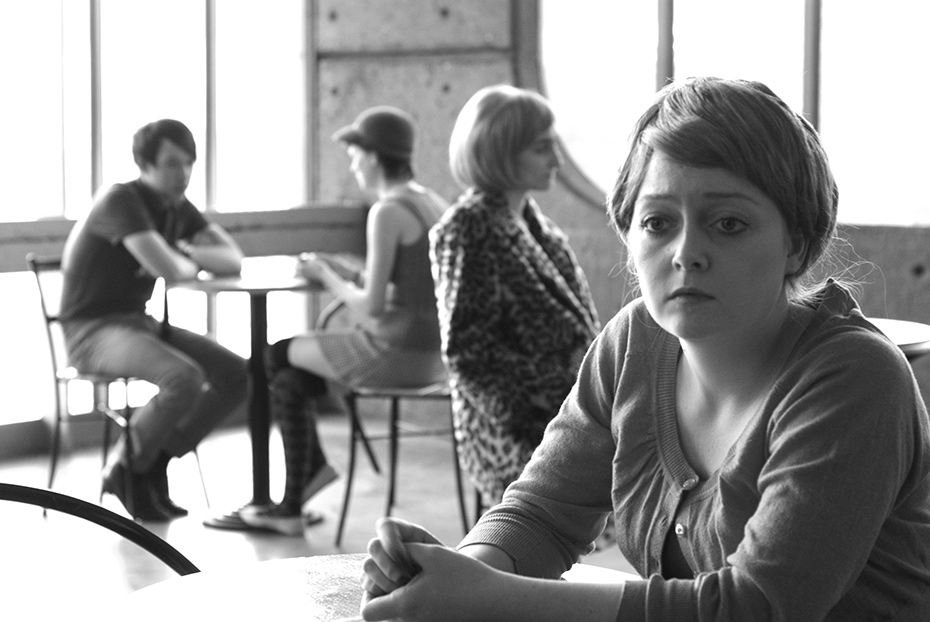William Kherbek on Lisson Gallery’s latest expo where the Irish artist explores spiritualism

The mind is a funny thing, full of seeming contradictions, given to self-deceptions, only vaguely able to understand itself. Every few months you read an article saying how this or that aspect of human behaviour has been ‘explained’ thanks to brain imaging technologies or DNA analysis. Most of the people I know concerned with neuroscience and the study of cognition tend to laugh at these ‘discoveries’. Just seeing an area of the brain light up on a computer map doesn’t ‘explain’ behaviour any more than knowing where CBGBs was ‘explains’ The Ramones. When you try to figure out what the mind is doing, you often end up tying yourself in knots, as does one of the ‘interviewees’ in a video work by Gerard Byrne titled, Subject featured in the show of his work at the Lisson Gallery. The video takes as one of its subjects ‘spiritualism’, one of those terms just vague enough to mean sufficiently different things to sufficiently different people as to make it a brief social craze and, obligatorily, site of a media scrum. The basic idea is that there’s some kind of spiritual something that’s not physical but which, apparently, after death separates said substance from the body, responds when members of the faith come together to summon it for the purpose of asking banal questions.
So, you’re on call 24-7 in the afterlife, too? Give me good old purgatory any day. In the video, one of the spiritualists cites as proof of the spirits he sees the fact that they don’t come to him if and when he wants them to, but at times when he’s least interested in hearing from them.It sounds plausible enough, but, then, I’d really rather not be thinking about the Kiss classic Lick It Up right now, but I am. Does this mean Eric Carr is speaking to me from the afterlife? Such unresolvable contradictions are surely part of the great appeal or Byrne’s works. If you’re not up-to-speed, and you can’t call on the spirit of Robert Hughes to fill you in, Byrne’s M.O. is to take transcripts from interviews, or news reports, or other supposedly ‘important’ gatherings from the past, and have them read by actors in new situations of Byrne’s devising. The spiritualism video is both timely, as the Spiritualist Association of Great Britain is presently under investigation by the Charity Commission relating to the recent sale of its London headquarters (coincidence?) and vaguely touching. Where people like myself who follow Jordan Baker’s lead and deal in a scepticism that touches the universal, Byrne’s videos serve to remind you how one form of belief, however apparently rational, can quickly lead to another less solidly grounded.
“Just seeing an area of the brain light up on a computer map doesn’t “explain” behaviour any more than knowing where CBGBs was ‘explains’ The Ramones”
We hear, for instance, the words of an academic who casts doubt on the claims of spiritualists, and debunks many of the important early texts of the field. These are, he assures us, ideas with no basis in science, as opposed to, for example, ESP, which the good professor notes has solid experimental evidence. Byrne’s actors are always a little incongruous, playing multiple parts, a bit stilted in delivery or approach, and this, along with framing devices, like occasionally filming a recording desk ostensibly taping the actors, work against the viewer’s natural tendency to become immersed in the narrative. Other parts of Subject are just as interesting – and, incidentally, the Lisson show constitutes a nice amuse bouche for the Byrne solo retrospective running contemporaneously at the Whitechapel gallery – particularly, a section about drug use in the student community in Leeds.
In the drugs piece, the artificiality of Byrne’s actors and cinematography has a difficult job competing with the sheer artificiality of a statement on the subject issued by Leeds’ University Student Union President, a fellow named Jack Straw. Did I say something about Byrne’s video highlighting of how different the past is from the present earlier? My mind must be playing tricks on me.
Gerard Byrne: Present Continuous Past, Lisson Gallery, 52-54 Bell Street, London NW1 5DA, Until 2 March




